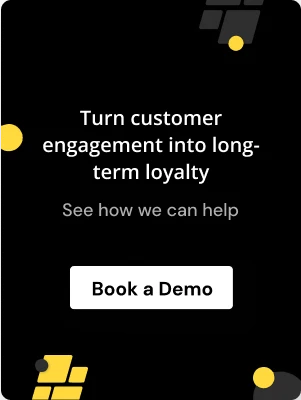.avif)
.avif)
In today's fast-paced and data-driven digital landscape, brands are constantly seeking innovative ways to engage with their customers and drive revenue. One of the most powerful tools at their disposal is first-party data. In this article, we will explore the significance of first-party data in 2024 and its potential to boost customer loyalty and drive revenue growth.
Understanding First-Party Data: The Key to Customer Insights

First-party data refers to the information collected directly from customers or website visitors. This data can be obtained through various channels such as website interactions, app usage, email subscriptions, loyalty programs, and text/SMS communications. Unlike third-party data collected through online tracking cookies, first-party data is obtained with the user's consent, making it more reliable and trustworthy.
The Reliability of First-Party Data
First-party data is widely considered to be more reliable than third-party data. Since it is collected directly from customers, it provides businesses with a deeper understanding of their customers' needs, preferences, and behaviors. This valuable insight allows brands to create highly targeted marketing campaigns, resulting in increased sales, conversions, and customer retention.
The Benefits of First-Party Data

- Enhanced Customer Understanding: First-party data provides businesses with detailed information about their customers, such as contact details, purchase history, and browsing behavior. This enables brands to gain a comprehensive view of their customers' preferences and tailor their marketing strategies accordingly.
- Highly Targeted Marketing Campaigns: With first-party data, brands can create personalized and highly targeted marketing campaigns. By analyzing customer behaviors and preferences, businesses can deliver relevant content and offers, resulting in improved customer engagement and conversion rates.
- Improved Customer Retention: By leveraging first-party data, brands can develop effective customer retention strategies. Understanding customer preferences and purchase history allows businesses to offer personalized experiences, loyalty rewards, and targeted promotions, fostering long-term customer loyalty.
- Accurate Attribution and ROI Measurement: First-party data enables accurate tracking and attribution of marketing efforts. By understanding the customer journey and the channels that drive conversions, businesses can optimize their marketing budget and measure the return on investment (ROI) more effectively.
Collecting First-Party Data: Best Practices
To harness the power of first-party data, businesses need to implement effective data collection strategies. Here are some best practices to consider:
1. Direct Data Collection
Encourage customers to share their information willingly by creating opportunities for direct data collection. This can be done through various touchpoints such as website registration, email subscriptions, loyalty programs, and SMS opt-ins. By offering value in exchange for data, businesses can build trust and establish a mutually beneficial relationship with their customers.
2. Compliant Cookie Banners
Utilize compliant cookie banners to ensure transparency and obtain the necessary consent for tracking. These banners should appear prominently on your website, allowing users to opt-in for tracking. Implementing this practice enables businesses to track user behavior and engagement, providing valuable insights for marketing strategies.
3. Server-Side Tracking
Implement server-side tracking to collect data directly from the server the client is using to access your site, rather than relying solely on client-side tracking. This method respects customer privacy while still capturing essential user actions on your website. Hiring a developer or utilizing tools like Littledata can help you set up server-side tracking seamlessly.
4. Utilize Data Analytics Tools
To fully leverage first-party data, it is crucial to use robust data analytics tools. Google Analytics 4 is a market leader in data reporting and analysis. By integrating your first-party data with these tools, you can gain valuable insights into customer behavior, track conversions accurately, and make data-driven decisions to drive revenue growth.
The Future of First-Party Data in 2024

As we move forward into 2024, the significance of first-party data will continue to grow. With the impending deprecation of third-party cookies and increasing privacy regulations, brands must prioritize their first-party data strategies to stay ahead of the curve. Here are some key considerations for the future:
1. Adapting to Changing Regulations
Privacy regulations such as GDPR and CCPA have reshaped consumer expectations and data governance practices. Brands must stay informed about evolving regulations and ensure compliance to build trust and maintain customer loyalty.
2. Embracing Zero-Party Data
Beyond first-party data, zero-party data is gaining importance. Zero-party data refers to information explicitly shared by consumers, such as preferences, interests, and purchase intentions. By directly asking customers for this information, brands can provide personalized experiences and build stronger connections with their audience.
3. Shifting to Explicit Data Requests
To enhance user experiences, brands should focus on understanding user motivations rather than relying on assumed behaviors. By explicitly asking for data that enhances personalization, businesses can foster deeper connections with their customers and drive loyalty.
Conclusion
In the ever-evolving world of digital marketing, first-party data has emerged as a powerful tool for brands seeking to boost loyalty and drive revenue growth. By collecting and leveraging direct customer insights, businesses can create personalized experiences, improve customer retention, and optimize marketing efforts. As we look to the future, brands must adapt to changing privacy regulations and embrace new data collection strategies to maintain a competitive edge. With the right use of first-party data, brands can forge stronger connections with their customers, foster loyalty, and drive long-term success in 2024 and beyond.
FAQs
Start Building Customer Retention That Lasts


.png)

